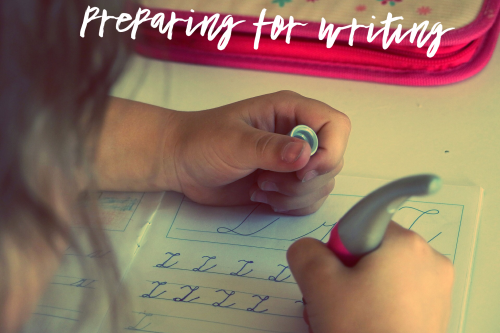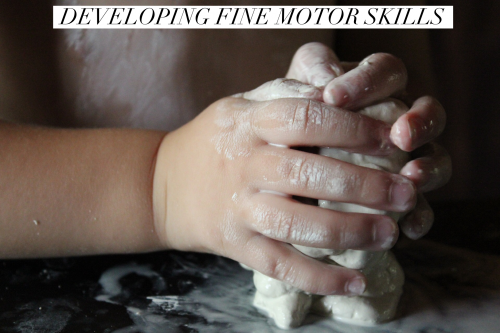If you have a child who finds writing difficult and doesn’t enjoy it, have you considered whether it is the physical act of writing that is holding them back, rather than a disinterest in doing it?
The physical requirements for writing are extensive and may surprise you: steady shoulders, movement of the wrist and elbow in just the right way, ability of the eyes to track the hand as it moves across the page, letter and word formation and recognition by the brain. These may be things we tend to take for granted, but for a child, writing is a physically and mentally demanding task and when the physical strength is not there, it can be exhausting.
When the brain and eyes work together, the eyes track the hand in order to develop hand/eye coordination. This, in turn, leads to the ability to copy, trace and draw. In addition, both sides of the brain are required to work together, to allow the child to use both hands or both arms at the same time to complete an activity. This is known as bilateral coordination.
Another important element of bilateral coordination is learning to reach with one hand across to the opposite side of the body. This is called crossing the mid-line, an imaginary line that runs vertically down the middle of your body. Being able to reach the right hand over to the left side and vice versa shows both sides of the brain are working together.

Preparation for writing begins when babies first start to master early gross motor skills. This includes development of core strength, which will enable the child to sit upright, strengthening the neck muscles to keep the head up, shoulder strength to help with arm and wrist movement and strong fingers for grasping and gripping.
Early writing in the form squiggles, may not make any sense to you or I, yet they show the beginnings of an understanding of the skills necessary for writing. Children learn to write by dong lines and strokes, usually in this order:
They may cover a piece of paper with drawings, symbols and possibly random letters, as they progress. These are all stages in the development of their fine motor skills and also shows they are taking an interest in letters and writing.
The next stage is developing an understanding of the way we write from left to right and across the page.
If a child has delayed gross or fine motor development, there is a strong possibility they will lack the physical strength necessary to help with early writing skills. It would come as no surprise, therefore, to find them struggling to write, not just in terms of letter formation, but also in speed. They can’t keep up in school, it’s exhausting and it leads to an aversion to doing it.
What can you do if you think your child needs help?
Exercises to help with core strength development are one of the best things you can do to help your child. If you think about it, poor core strength means that even just sitting at desk for lengthy periods is difficult. If a child can’t hold themselves upright properly, they won’t be able to concentrate at school or be able to hold a pencil for long periods in order to write.

Exercise they can do to help with core strength include:
For fine motor skill development, activities using a paint brush, or tongs are really helpful, as are using scissors, sewing (or any threading activities) and Hama beads. Tracing letters on specially-lined handwriting paper, is a good way to help with the pencil grip, as well as the necessary hand/eye visual coordination.

If you suspect your child may need an assessment, talk to your GP. A physiotherapist, for example, will be able to prescribe exercises to help and can also check for any physical conditions, such as hypermobility, which means it is more difficult to control the muscles in the body.
My youngest son is hypermobile and he had delayed gross and fine motor development. Whether this was as a consequence, or in conjunction with, I’m not sure. His hand writing was very poor though and he hated writing, doing the absolute minimum he could get away with.
He was referred to a physiotherapist, who gave him specialist exercises to help strengthen his core and straighten out his shoulders (his core was very weak and his shoulders hunched forward, therefore making everything on the top half of his body very tight), and we have worked consistently hard with him in order to correct this problem. The outcome of this is a huge difference to his physical strength. This, in turn, has had a knock-on effect on his writing and at nearly ten years old, he no longer finds it difficult. In fact, he even says English is his favourite subject!
Let me know if you’ve had a similar experience and what you’ve done to address it.

My son is 17 and has struggled to write for his entire life. He is bright, but his writing always lets him down as he just can’t get everything down on paper and it isn’t legible. He started a new school for 6th form and actually got referred to the SENCO and now has permission to use a laptop in all lessons and exams. Now he has to remember to use it for homework and has to improve the accuracy of his typing in time for his A Levels next year!
Has anyone ever got to the bottom of why he struggles? Glad he’s finally been allowed to use the laptop though. That must have been very frustrating all these years.